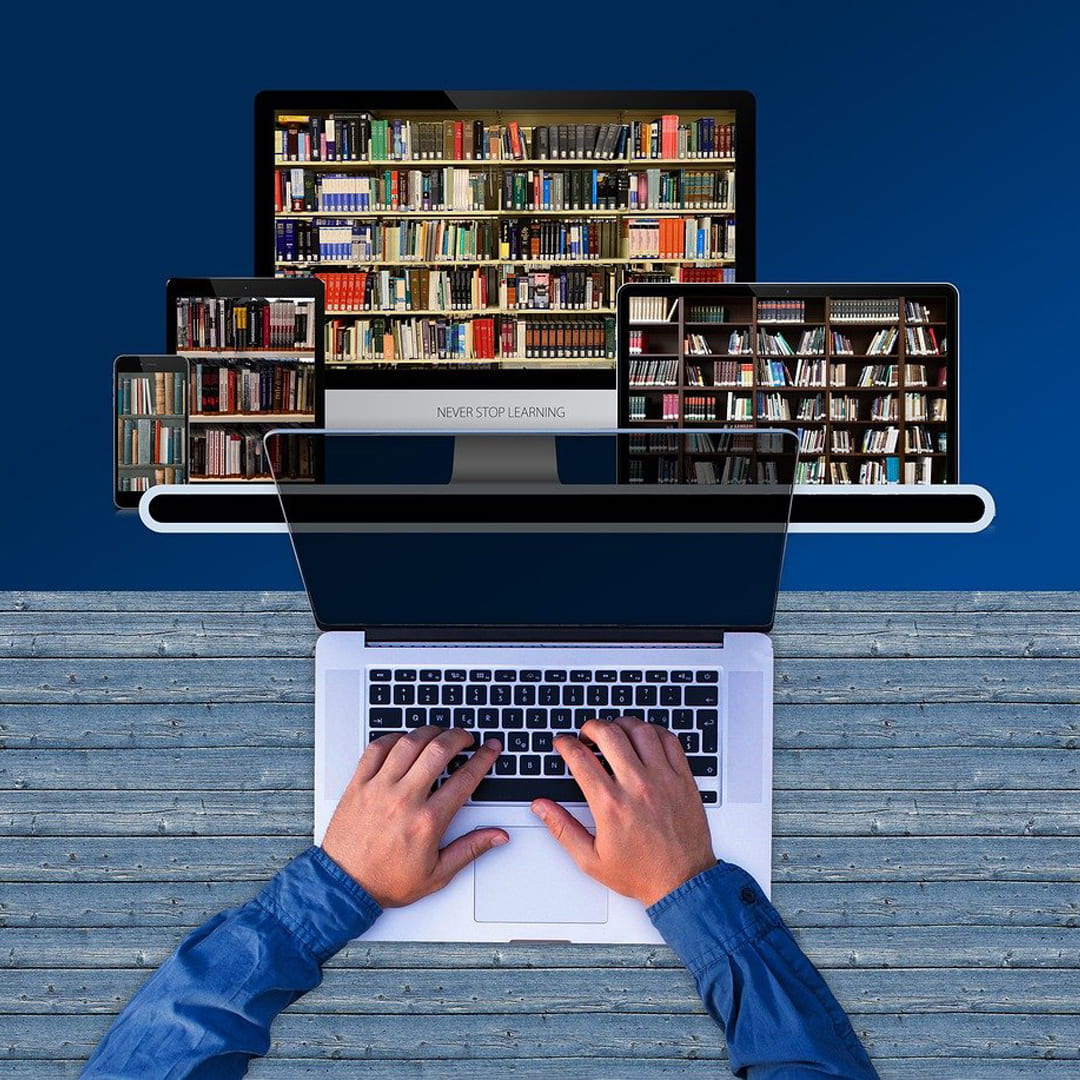It wasn’t long ago that beginning a literature review required a physical visit to the library and flipping through the pages of The Reader’s Guide to Periodical Literature. The most efficient search engine of the day was present in human form—reference librarians who staffed busy service desks and led bibliographic instruction sessions for visiting classes.
Today, faculty and researchers can chat with library staff without ever leaving the comfort of home. They can leverage metadata to discover new articles via open knowledge maps. Librarians and faculty can read these articles on tablets, use AI-powered augmented reading applications, or deploy social annotation to help students engage with one another and the text simultaneously. While there is no doubt that advances in technology have changed the nature of scholarly communication, we must also reckon with the added complexity these improvements bring—ethical considerations surrounding authorship and use, digital equity, information overwhelm, and the need for digital literacy competencies to name a few.
At Texas State University Libraries (UL), we are evolving to meet these demands for the good of our faculty and student scholars.
A New Library Instruction Model
In alignment with the University Libraries strategic imperatives and those of the university, UL has completed a two-year transition to a new service model, moving from Subject and then College Liaison Librarians to a new team-based model. This change is increasingly common among (Association of Research Libraries) ARLs Libraries across the country. It enables librarians to grow their skillsets and research and writing portfolios concurrent with the evolution of the field. The newly formed Texas State UL Instruction Team is divided into disciplinary sub-teams in the following areas: Arts & Humanities, Business & Education, Health Professions, and Science & Engineering.
This model applies primarily to instruction for courses. UL will continue to offer and expand learning opportunities—from the First-Year Research Program to micro-credentials in Alkek One, to Archival Research in a specialized collection. For course-level sessions, we are committed to learner-centered pedagogy. In practice, this means that we leverage digital learning content to meet the just-in-time needs of students. Database demonstrations, information literacy fundamentals, and step-by-step research strategy instruction will be delivered digitally. This enables librarians to dedicate any classroom time to: active learning exercises; topic development feedback for individual students; troubleshooting search queries; making recommendations for databases, result filters, and search operators; and more. As proponents of relationship-rich education, the UL Instruction Team prioritizes meaningful connection over lectures.
Multiple Modalities to Teach Multiple Literacies
Historically, library research instruction has developed alongside the field of information literacy. As technology and knowledge has grown, library instruction is now grounded in digital literacy, an umbrella term that includes information literacy. We particularly appreciate the explanation of digital literacies provided by EDUCAUSE:
The concept of digital literacy encompasses a range of skills and knowledge necessary to evaluate, use, and create digital information in various forms. Digital literacies include data literacy, information literacy, visual literacy, media literacy, and metaliteracy, as well as related capacities for assessing social and ethical issues in our digital world.
Our learning outcomes and curriculum have been designed using the ACRL Framework for Information Literacy for Higher Education and Virginia Tech’s Digital Literacy Framework.
While we believe that digital literacy should be a part of every course in the curriculum, we also recognize that librarians are uniquely positioned to empower student success in this area due to expertise in the field of information science. We are working to create learning content in multiple modalities to meet the needs of every type of learner. We’ve also outlined best practices and guidelines for integrating library instruction into your classes. Here is a preview of the various options now available:
Asynchronous Instruction
- Research Tutorials Library Guide. These self-paced, interactive tutorials cover the research process, topic development, the mechanics of finding sources, and an overview to citation. You can embed this content into your Canvas or link directly to it. We are sharing information with students about how to use the tutorials.
- Custom Course Guides & Tutorials. You can also work with your disciplinary instruction team to create content customized to your course and learning outcomes. Most commonly, this will result in a Course Guide (ex: MFGE 5320: Polymer Nanocomposites). Deeper collaborations can also produce Open Educational Resources (OER), in the form of Pressbooks (like Leadership and Management of Nursing Care by Dr. Kim Belcik) or interactive tutorials. Again, everything can be embedded into your Canvas Course!
- Import Canvas modules from the Canvas Commons. This is another method to deploy content; it also gives you the flexibility to add context.
- Create Canvas assignments for completion points. Your librarian can help you set this up; it’s highly recommended for flipped classroom sessions.
Synchronous Instruction
- Flipped classroom instruction. Students complete asynchronous online tutorial before class, librarian leads synchronous active learning during class.
- Specialized synchronous. An option for a specific topic, database, or project. We recommend you pair with the creation of customized asynchronous content and/or an Open Pedagogy assignment.
Request library instruction now!
Looking forward
Moving to a team-based instruction model means that TXST librarians will be working towards Student Success and the Run to R1 in various ways: by creating a new Peer Research Coaching program; expanding opportunities for Open Educational Practice; creating new programming, learning experiences, and partnerships for Student Success; publishing in the Scholarship of Teaching & Learning (SoTL); and creating new co-curricular micro-credentials in the potential areas of AI Literacy, Personal Knowledge Management, and Data Literacy.
We are excited to be embracing the opportunities new technologies afford us for meeting the needs of our faculty and students. If you have any questions about the new service model or want to partner with us for your specialized instruction needs, please contact Jess Williams: jesswilliams@txstate.edu.
This article was contributed by University Libraries Assistant Director for Teaching and Learning Jess Williams.
